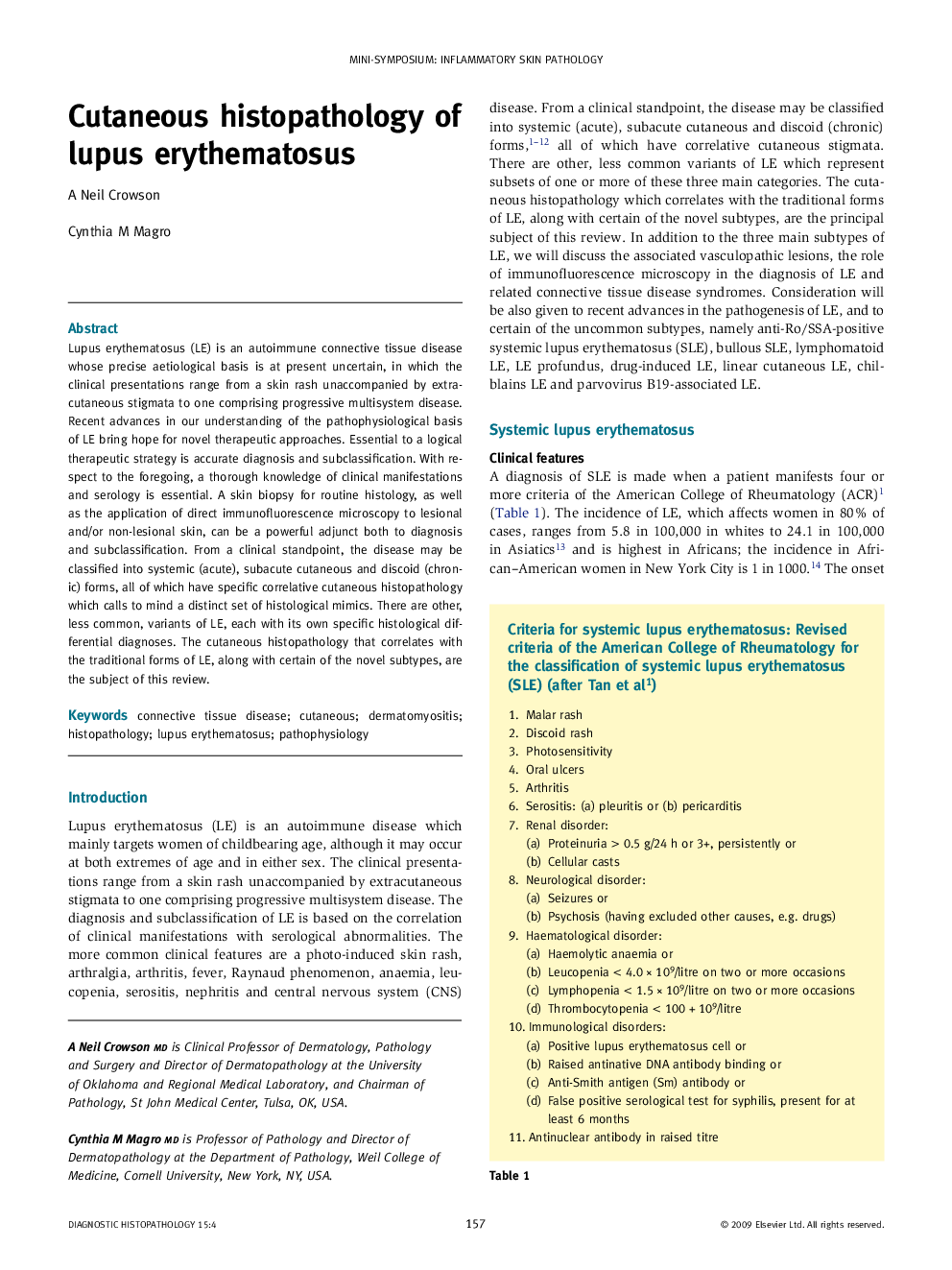| Article ID | Journal | Published Year | Pages | File Type |
|---|---|---|---|---|
| 4131735 | Diagnostic Histopathology | 2009 | 29 Pages |
Lupus erythematosus (LE) is an autoimmune connective tissue disease whose precise aetiological basis is at present uncertain, in which the clinical presentations range from a skin rash unaccompanied by extracutaneous stigmata to one comprising progressive multisystem disease. Recent advances in our understanding of the pathophysiological basis of LE bring hope for novel therapeutic approaches. Essential to a logical therapeutic strategy is accurate diagnosis and subclassification. With respect to the foregoing, a thorough knowledge of clinical manifestations and serology is essential. A skin biopsy for routine histology, as well as the application of direct immunofluorescence microscopy to lesional and/or non-lesional skin, can be a powerful adjunct both to diagnosis and subclassification. From a clinical standpoint, the disease may be classified into systemic (acute), subacute cutaneous and discoid (chronic) forms, all of which have specific correlative cutaneous histopathology which calls to mind a distinct set of histological mimics. There are other, less common, variants of LE, each with its own specific histological differential diagnoses. The cutaneous histopathology that correlates with the traditional forms of LE, along with certain of the novel subtypes, are the subject of this review.
